Estimated reading time 14 minutes, 22 seconds.
Four CT-155 Hawk jets flew into Kamloops, B.C., on July 8, part of a wave of past and present “Moosemen” from 419 Tactical Fighter Training Squadron, also known as Moose Squadron, who descended on the city for the weekend.
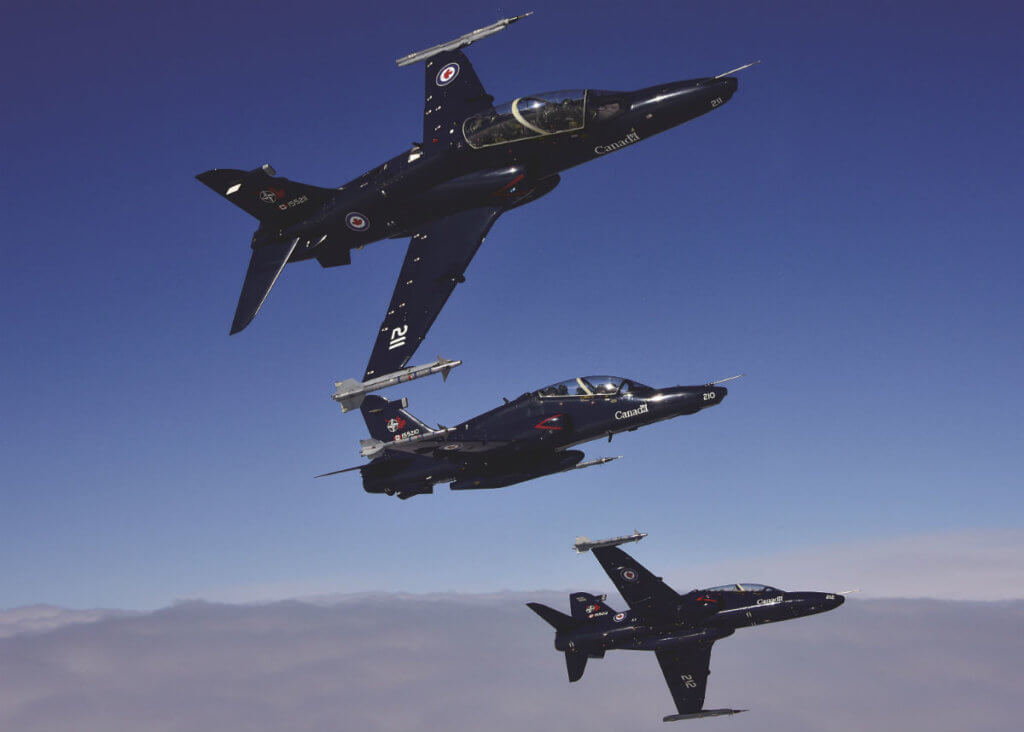
The occasion was a reunion to mark the squadron’s 75th anniversary, one of many celebrations taking place across the country this year as most of the Royal Canadian Air Force’s (RCAF) 400-series squadrons commemorate their founding under the British Commonwealth Air Training Plan.
Among the four Hawks was a newly painted jet in a brown and green camouflage pattern that honours 419’s origins as a bomber squadron in the Second World War. The call letters VR-W are in recognition of the Wellington bomber flown by the unit’s first commander, John “Moose” Fulton, a native of Kamloops.
Insignia and other markings–created by 4 Wing Cold Lake, Alta., veteran design director Jim Belliveau–tell the tale of the squadron’s bomber history flying the Vickers Wellington, Handley Page Halifax and Avro Lancaster.
Disbanded following Japan’s surrender in 1945, 419 Squadron was reactivated in 1954 as a fighter squadron, first in North Bay, Ont., and then, three years later, in Baden-Soellingen, Germany, as part of Canada’s contribution to NATO in Europe.
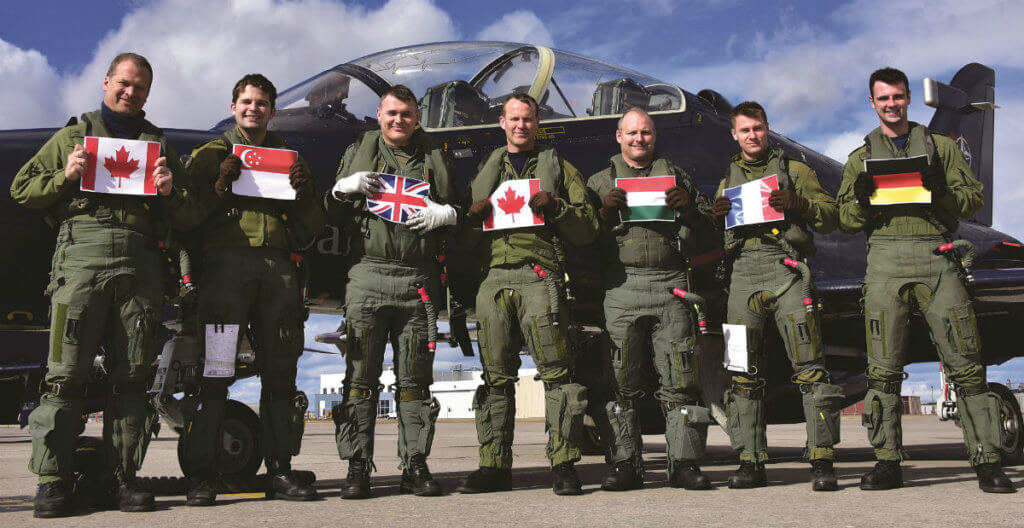
Disbanded for a second time in 1962, the unit returned to active duty in 1975 as a tactical fighter training squadron on the Canadian-built Canadair CF-5 Freedom Fighter. Although the squadron was deactivated again in 1995, its training mandate endured. When it was revived in 2000, it became a core part of the NATO Flying Training in Canada (NFTC) program, a role it has continued to play for the past 16 years.
Despite those disruptions, almost every RCAF fighter pilot has touched down at 419 Squadron since 1975, making the unit a cornerstone in the RCAF’s pilot training program.
But it is also a squadron adapting to change: a new training curriculum since 2012 and, as of October 2015, a new corporate partner for the NFTC program, CAE, that maintains its facility, its aircraft and its simulation systems.
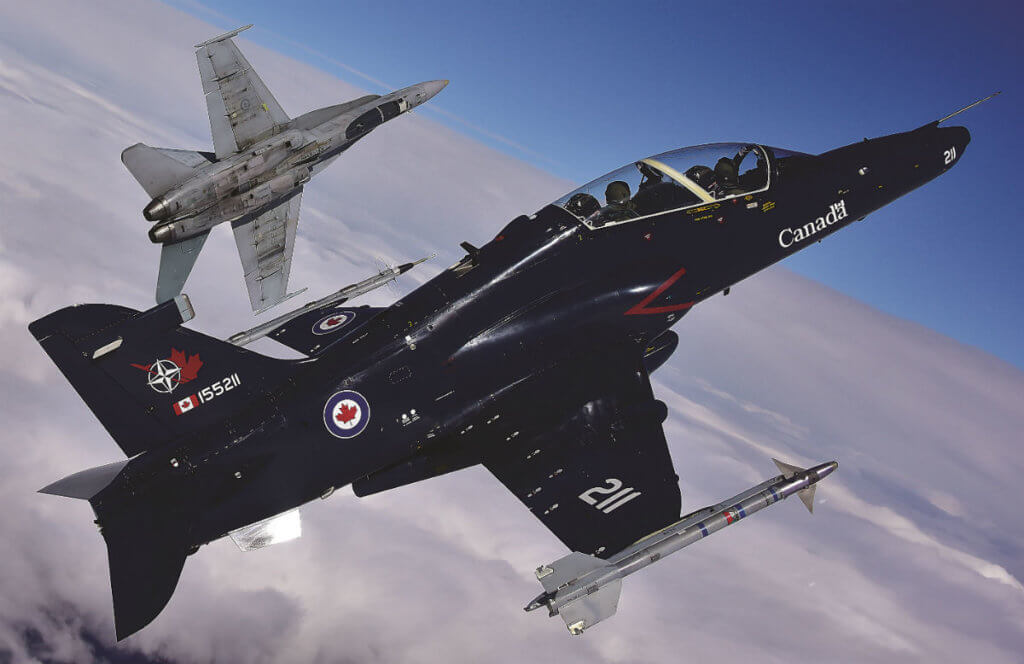
And more change is on the horizon. The air force has begun analyzing options for future aircrew training that will replace or incorporate NFTC and Contracted Flying Training and Support, a primary flight training program provided by Allied Wings, a consortium lead by Kelowna Aircraft, in the mid 2020s. And once the government decides on a replacement for the CF-188 Hornet, the RCAF will also move forward on a new fighter training jet to replace the squadron’s fleet of nine BAE Systems CT-155 Hawks.
Critical Competencies
419 Squadron provides the RCAF’s fighter lead-in training (FLIT) program, a selection course for the frontline squadrons that is also known as Phase IV of NFTC. Those who pass the four-month program then trek across the runway at 4 Wing to 410 Tactical Fighter (Operational Training) Squadron, the final step on a long road to being assigned to a CF-188 Hornet operational fighter unit.
Without the bomb-dropping capability or the radar and night vision systems of the Hornets, 419 prepares fighters for operations on the Hawks by drilling fighter skills and tactics and instilling three critical competencies: situational awareness, capacity, and decision-making in dynamic environments.
410 Squadron may now be training pilots on new GPS-guided weapons as part of a revamped syllabus, but the basics of close air support, airborne interdiction and air-to-ground attack missions remain generally the same, said 419 Squadron’s commanding officer, LCol Mike Grover, a decorated fighter weapons instructor with tours in the Balkans and Afghanistan.
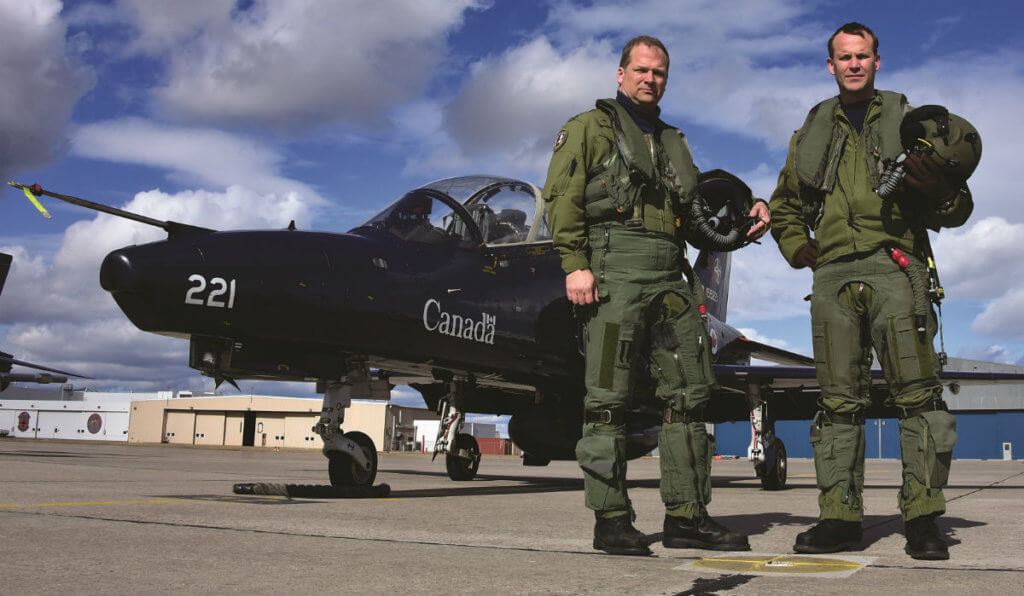
“Dropping weapons has still got a work cycle that we work to, it’s just now there is way more data fed into the frontline that has to be assimilated by the aircrew,” he said. “But that comes down to those three competencies: does the young pilot have the capacity to gain the situational awareness and make the proper decisions?”
“By focusing on those areas, 419 makes it easier for [student pilots] to transition here,” added LCol Chris Matthews, the commanding officer of 410 Squadron. “Students who have the most success are the ones that have all the core stuff that is taught at 419, are able to assimilate it quickly, and then move on to the new stuff we teach.”
Under the original NFTC program, 419 Squadron has since 2000 provided training to a multinational student population of around 58 Canadian, Danish, Italian, British, Singaporean and Hungarian pilots per year, with an equally diverse mix of instructors.
Although that international flavour is unlike any other squadron in Canada and offers enormous benefits–“it shows students the coalition operations we will always be in,” said Grover–it has not always aligned well with the missions of the RCAF’s operational squadrons.
From 2000 to 2012, the schoolhouse delivered a fighter lead-in training syllabus geared to the collective needs of its international clients, focusing on requirements common to all. With the departure of Britain, Denmark, and Italy in 2010 as per the original NFTC contract, the schoolhouse in 2012 changed the course to better fit Canadian needs. It still has an international dimension–Singapore and Hungary remain clients, and it is courting others–but it now has more flexibility.
“We wanted to do close air support and a few nations didn’t, which stopped it because the contract didn’t allow us to add extra hours. It was fairly rigid back then,” Grover explained. “The new syllabus is more responsive to the desire of the frontlines.”
Today, 419 Squadron puts about 30 students through the program per session, approximately 20 of whom are Canadian. (The legacy syllabus has been retained for the Republic of Singapore Air Force.) The four-month course, which can extend as long as eight months due to Cold Lake’s weather, consists of 37 sorties of approximately 45 flight hours per student.
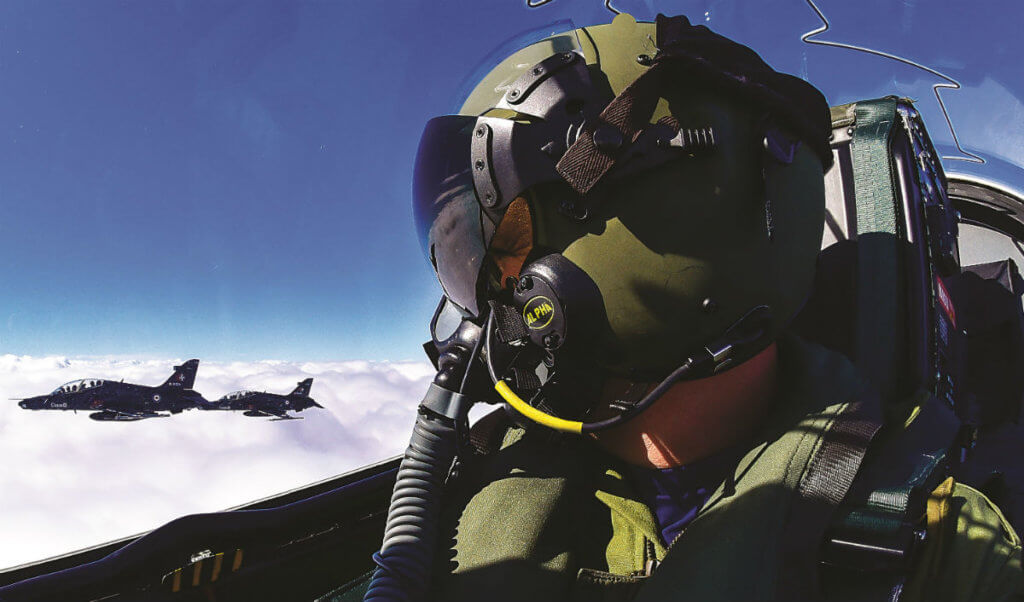
The RCAF also sends two student pilots to the Euro-NATO Joint Jet Pilot Training course at Sheppard Air Force base in Texas. Grover said that while a national FLIT program allows Canada to set a program specific to its requirements, “I like the fact that we have a couple outsourced. It keeps us connected with other people and how they do FLIT. And those two do equally well going through 410 Squadron.” In addition, students in Texas are able to fly almost every day, reducing the course time considerably.
The new syllabus is still evolving, Grover said, but one noticeable outcome of the change has been an increase in the failure rate. Prior to 2012, few, if any, students failed the program. Although the sample size is still small, failures are now around three to four per course. That might not seem a positive statistic at first glance, but it means those that pass are more likely to succeed at 410 Squadron.
“We feel that is a success,” Grover said. “Before 2012, they would have passed this course and gone on and failed 410.”
Added Matthews: “We would historically [fail] about 15 to 20 per cent of our 18 students. The last course had zero and the one that just graduated had two.”
If the squadron has a challenge at the moment, it is with its instructor cadre. Although there were 18 when Skies visited, just six were Canadian, including the commanding officer, his deputy, and the operations officer.
“The frontline squadrons have an experience gap of lots of new guys and a few elders and not much in the middle,” Grover explained. As a result, the RCAF is struggling to man the schoolhouses in both Cold Lake and 2 Canadian Forces Flying Training School in Moose Jaw, Sask.
His goal is to bring in more young instructors with recent operational experience–“they can talk the talk, they have immediate street credibility, and they know those subtleties that maybe I don’t know not being in that combat.”
But convincing operational pilots to become teachers is a tough sell.
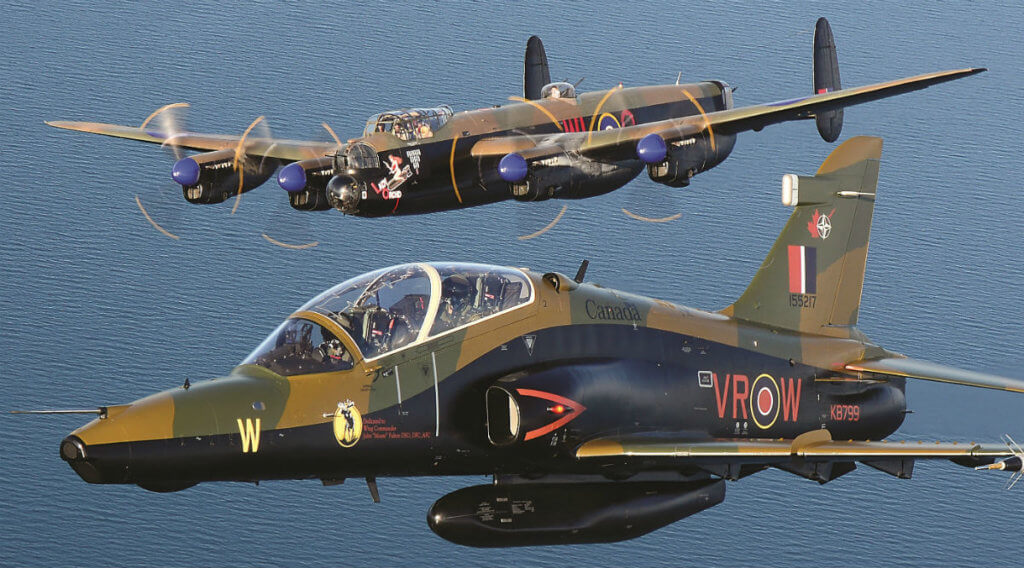
“Being a single seat front-end fighter guy is what we want to do, and any time you get plucked to sit in the back seat there is a bit of a transition. We have a hard time drawing down for that reason. They are hungry; they have spent so many years on that train getting to the frontline.”
He said new initiatives to help pilots understand the posting is temporary and they will soon be back on operations might help, but “it’s tough right now with our current numbers.”
Fortunately, many of the international instructor pilots, who usually sign on for three years, will often extend their tour by one or two years, allowing the school to maintain its high standards.
The difficulty of producing enough instructor pilots is directly tied to an ongoing challenge of generating enough fighter pilots. With fewer fighter instructors in Moose Jaw as part of the early phases of NFTC, the community has a smaller footprint and less influence on young pilots still determining which aircraft to fly, Grover observed.
“The fighter stream is the longest track to go through to get to operational. They see that. After [getting their] wings, a multi-engine or helicopter pilot will get posted to their squadron, do a check out, and generally most are then employed. With fighter jets, there is a long way to go.”
Culture Shift
In October 2015, CAE finalized a $19.8 million deal to acquire the Military Aviation Training division of Bombardier Aerospace, which included responsibility for the NATO Flying Training in Canada program. For most of the 27 civilian staff at 419 Squadron, the change in ownership meant little more than a change in golf shirt and baseball cap. The day-to-day activities still carried on and the strong relationship with the military personnel continued.
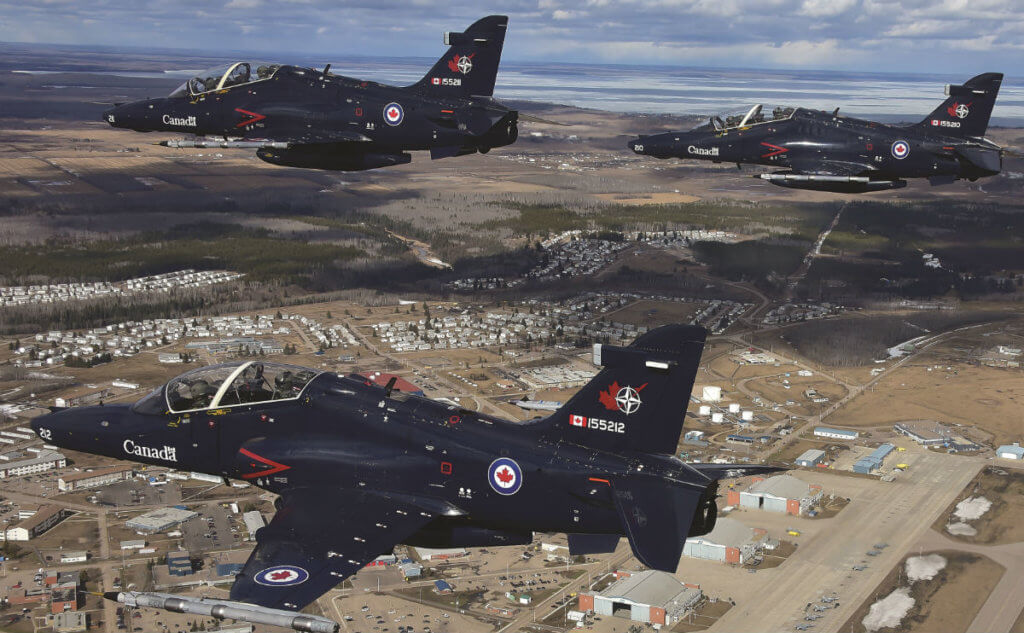
But there was a noticeable shift in culture when CAE became the prime contractor for the NFTC.
“They are simulation and integrated training solutions experts,” said Grover. “Bombardier did a great job, but [CAE] definitely has a different focus, strategy and vision on what they want to do within Canada and the air force, [especially] with getting into live flying training. We are still in that honeymoon period, I would say, but I am impressed every day at how focused this company is on wanting to make change and evolve.”
CAE has a lot with which it can work. The squadron might be relatively small but the contractor team manages to sustain two maintenance shifts per day, keeping the Hawks in the air for roughly 3,000 flight hours per year. That annual total–an “incredible feat,” according to Grover–makes 419 Squadron one of the highest time global operators of the Hawk.
The main difference in ownership is attitude, said Dale Daw, CAE’s group leader and a 31-year veteran of the Canadian Armed Forces, who has spent the past three years with 419. “They train. From my point of view, that is what has changed. We are now part of the training system.”
To meet the high training demand, the 16-year-old Hawks are maintained every day to ensure they are rarely down during the training week. “When the [program] started, we used to fly, fly, fly and then do a whole bunch of work,” Daw explained. “Every 500, 1,000 and 2,000 flight hours there are big inspections, but otherwise we do a little bit every day and just keep them flying.” On the day Skies visited, seven Hawks were on the flight line, one was in for major repairs, and one was having its canopy replaced due to a bird strike.
The RCAF has laid out a strategic road map that will see it adopt a simulation-focused training system by 2025. Released in 2014, the simulation strategy found that while the air force already possesses much of what it needs to achieve that goal, most of its training and simulation systems were acquired specifically for a particular aircraft and are either not “synchronized or aligned” with the strategy or are “incompatible or redundant.”
CAE has provided the squadron’s lone simulation system since the NFTC was stood up in 2000. But it is an older model Hawk trainer–what Grover called “a big amusement ride.” With CAE now responsible for support of the entire program, and with more and more of each phase of the NFTC being done on simulators to better manage tightened budgets, the hope is for two new, networked trainers to improve course delivery.
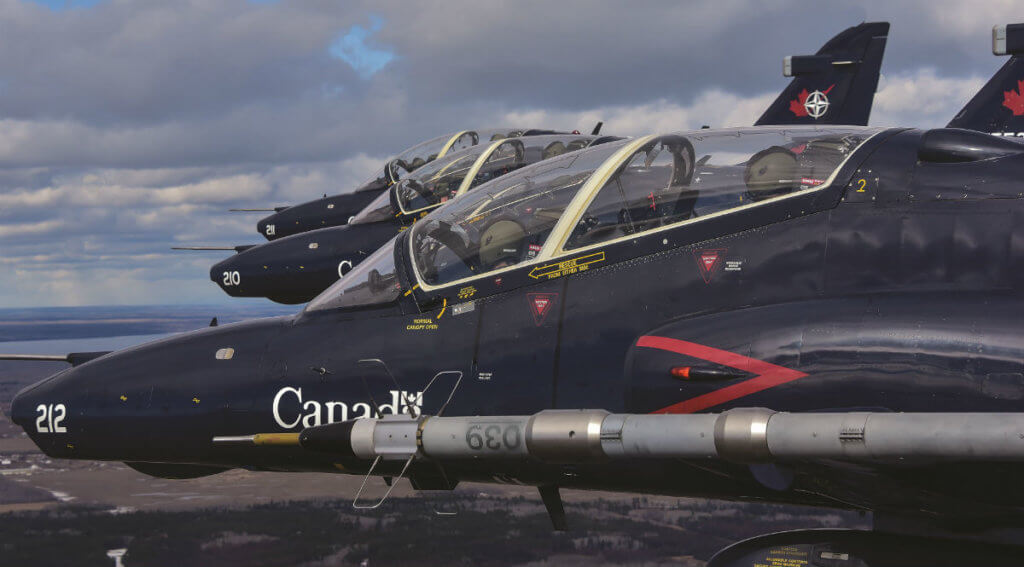
“They are incredible sims now. You can fly in a visual environment and get what you need out of a simulator,” said Grover, adding that discussions have been underway between CAE and the RCAF since last fall.
From Day to Night
While the operational squadrons are keenly watching the slow progress of the RCAF’s fighter replacement project, 419 Squadron also has a stake in what comes next: Once a replacement jet is selected, the air force’s next jet trainer must also be chosen.
That decision is still a number of years away, Grover said, but there are several capabilities that would help pilots transition better to a new fighter, including some form of radar and a helmet-mounted cuing system and night vision goggles.
“We are daytime fighters in the Hawk without those systems,” he explained. “The frontlines are more than 50 per cent night flying. So we need to bring this program into the night, and we can do that with those systems.”
Also, since the Hawks are not fitted to drop weapons, such training is often done in simulation. The addition of a “drop capability” would help build “pickle discipline,” continued Grover.
“As a pilot you need to feel the [weapon] come off your wing, feel the weight and balance change, feel how it flies being all hogged up with the weight of all the bombs. That real time feedback is important. We wish that was in the program, for sure.”
Whatever the RCAF acquires for its next trainer, it will be part of a comprehensive training system that brings together live, virtual and constructive training to attract and deliver fighter pilots for the air force. While tomorrow’s recruits may be more comfortable with virtual reality, simulators won’t replace live flying. Even as pilots are tasked to manage more data generated by an ever growing array of sensors, the basic manoeuvres of flying will still be essential. And so will 419 Squadron.
Chris Thatcher is a freelance writer specializing in defence, security and technology issues.
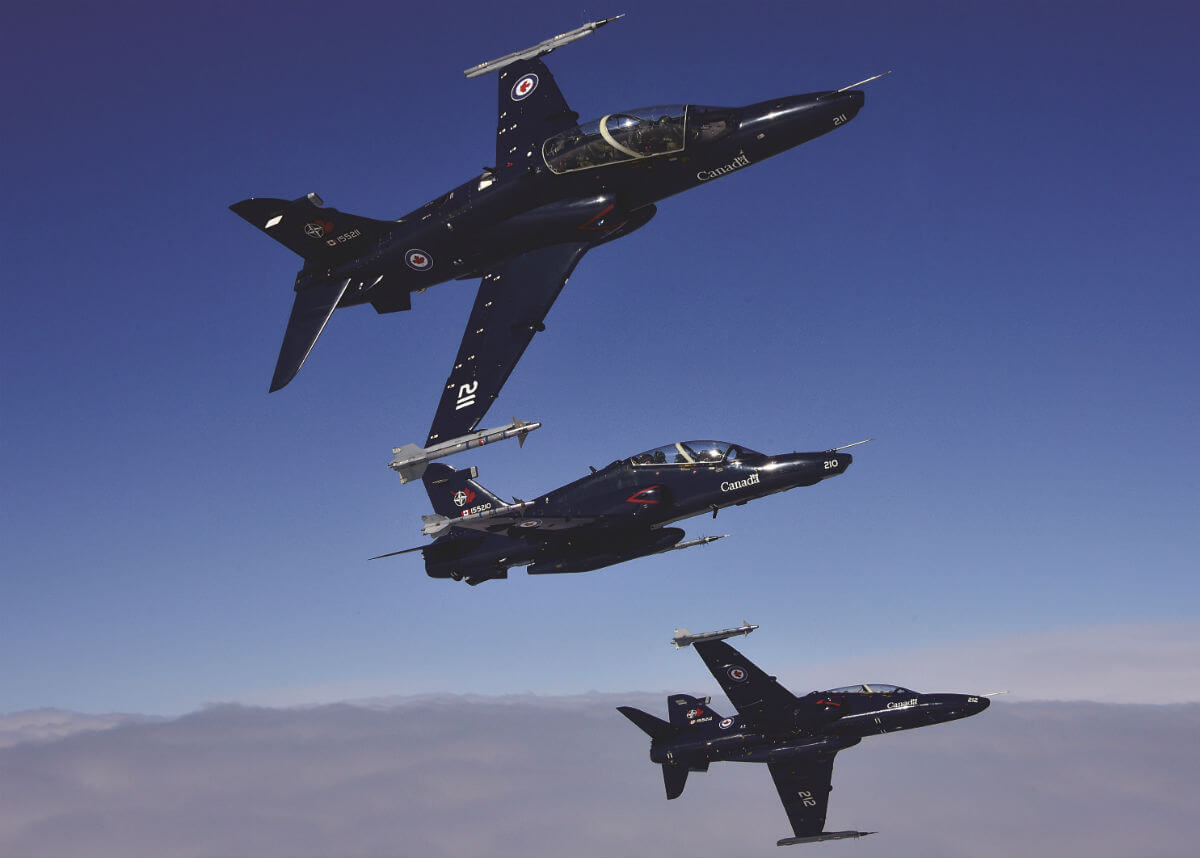

A well written srticle that provides a good over view of 419 and the important role it plays in the development of Canada’s fighter pilots. The changes in the approach to training and the new partnership auger well for the continued success of 419.
Wishing the women and men of 419 all the best.
Paul Byrne
HCol 419 (2009 – 2012)